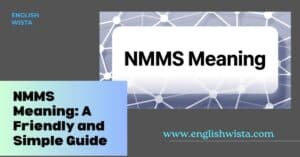Have you ever been in the middle of a conversation online and suddenly seen someone type “TF”? Maybe it left you scratching your head, wondering, what does that even mean? Don’t worry you’re not alone. Internet slang can sometimes feel like a whole new language. Words are shortened, letters are mixed, and suddenly two little characters can carry an entire mood.
In this article, we’re going to explore “TF” in chat. We’ll look at what it stands for, how people use it, and the different situations where you might see it pop up. By the end, you’ll feel confident not only understanding it but also knowing when (and when not) to use it yourself.
Let’s dive in step by step.
What Does TF Mean in Chat?
The most common full form of TF in chat is:
“The F*”** (where the “F” stands for a strong swear word).
It’s used to show surprise, confusion, or even disbelief. For example, if your friend says:
- “I just saw a dog riding a skateboard.”
You might reply with: - “TF? Are you serious?”
Here, “TF” is basically saying, “What the heck is going on?” but with a stronger punch.
Why Do People Use TF Instead of Writing the Whole Word?
There are a few reasons why people shorten words like this:
- Convenience: Typing two letters is faster than typing a full phrase.
- Casual Tone: Online chats are informal, so people naturally shorten their words.
- Softening the Swear: Not everyone likes typing or reading strong curse words. Using “TF” hides part of the word while still getting the message across.
- Internet Culture: Abbreviations are part of how the online world communicates. Using them makes you sound more “in the loop.”
Is TF Always Offensive?
Not necessarily. While the “F” in TF technically refers to a curse word, people often use it in a light or joking way. It doesn’t always carry the same weight as saying the full curse out loud.
For example:
- “TF is this weather? It’s sunny one second and raining the next.”
In this sentence, it’s less about being rude and more about expressing frustration or confusion.
Different Ways TF Is Used in Chat
“TF” can take on slightly different meanings depending on the context. Let’s break down some common uses:
1. Showing Surprise or Shock
- “TF just happened?!”
Used when something unexpected occurs.
2. Expressing Confusion
- “TF does that even mean?”
When you don’t understand something.
3. Questioning Something
- “Who TF told you that?”
When you want to challenge or question a statement.
4. Adding Humor
- “TF you doing, bro?”
Sometimes used in a joking, friendly way.
5. Annoyance or Frustration
- “Why TF is this Wi-Fi so slow?”
Perfect for when you’re irritated.
Examples of TF in Sentences
Let’s look at a variety of sentence examples so you can see how TF fits naturally into chat conversations:
- “TF was that noise?!”
- “Who TF leaves their dishes in the sink all the time?”
- “TF you mean by ‘it’s easy’?”
- “I just saw my ex at the store TF are the chances?”
- “Why TF is this website not loading?”
- “TF kinda movie did we just watch?”
As you can see, it usually adds emphasis to a question or statement.
Variations and Related Phrases
Sometimes, people mix “TF” with other slang to create variations:
- WTF – “What the f***” (more common than just TF).
- WTH – “What the heck/hell” (a cleaner version).
- AF – “As f***,” used for emphasis (e.g., “hungry AF”).
- OMFG – “Oh my f***ing God.”
Compared to these, “TF” is shorter and snappier, but it carries the same energy.
Is TF Singular or Plural?
This is a funny question that sometimes comes up, but the answer is simple: TF is neither singular nor plural. It’s not a noun. Instead, it’s an abbreviation used to express feelings like confusion, shock, or disbelief.
So you wouldn’t say “one TF” or “two TFs.” You just use it as part of a sentence.
Where Did TF Come From?
The exact origin of “TF” is hard to pin down, but it grew naturally out of online chat culture. As people started shortening longer expressions like “WTF,” the smaller form “TF” became popular too.
It’s especially common in:
- Text messaging
- Social media platforms (Twitter, TikTok, Instagram, etc.)
- Gaming chats
- Memes
Memes, in particular, have helped spread the use of “TF,” often with funny or exaggerated captions.
When Should You Use TF?
You can use TF when you want to:
- Show that you’re shocked or confused.
- Add emphasis to a question.
- Make a casual conversation more expressive.
However, you should avoid using it in:
- Formal settings (like emails to your boss).
- Professional chats (like work group chats).
- Conversations with people who dislike swearing.
Always consider your audience before typing it out.
Is TF the Same as WTF?
Not exactly, but they’re closely related.
- WTF is longer and directly means “What the f***.”
- TF is shorter and more flexible. It can stand alone or be added into different phrases.
For example:
- “WTF is going on?” = full expression of confusion.
- “TF is going on?” = shorter but still strong.
Both are widely understood, so it often comes down to personal preference.
Fun Facts About TF
- Meme Power: “TF” often appears in funny meme captions with animals, cartoons, or reaction images. Example: a cat staring at a cucumber with the caption, “TF is this?!”
- Cross-Generational Use: While many slang terms are tied to a specific age group, “TF” has spread across both younger and older internet users.
- International Popularity: Even people who don’t speak English fluently use “TF” online because of its simple, universal vibe.
Comparing TF to Cleaner Alternatives
Sometimes you might want to express surprise without sounding rude. Here are a few alternatives you can use instead of TF:
- “What on earth…?”
- “What the heck…?”
- “Seriously?”
- “Are you kidding me?”
- “Wait, what?”
These don’t have the same punch, but they’re safer in polite conversations.
Practical Tips for Using TF in Chat
- Don’t Overuse It: If you say “TF” in every message, it might lose its impact.
- Use with Friends: It works best in casual, friendly chats where everyone knows your tone.
- Mind the Setting: Keep it out of classrooms, workspaces, or formal messages.
- Combine with Emojis: Sometimes people add emojis for extra effect. Example: “TF is that 🤯😂”
Recap of Key Points
- TF full form in chat = The F*.**
- Used to show surprise, confusion, disbelief, or frustration.
- Popular in memes, texting, and online conversations.
- Similar to WTF but shorter and more flexible.
- Best used in casual settings with friends.
- Not recommended in formal or professional chats.
Conclusion
So, the next time you see “TF” in a chat, you won’t have to pause and wonder what it means. You’ll know it’s a shorthand way of expressing shock, confusion, or disbelief. Think of it as the internet’s quick way of saying, “What’s going on here?” but with a bit more attitude.
Like many pieces of internet slang, it’s casual, expressive, and a little playful. Just remember to use it wisely, keep your audience in mind, and don’t be afraid to laugh at the funny, over-the-top ways people use it online.
In short: TF is your two-letter ticket to sounding fluent in internet chat. Now that you know what it means, you’ll probably start noticing it everywhere. And who knows? You might even start using it yourself.



